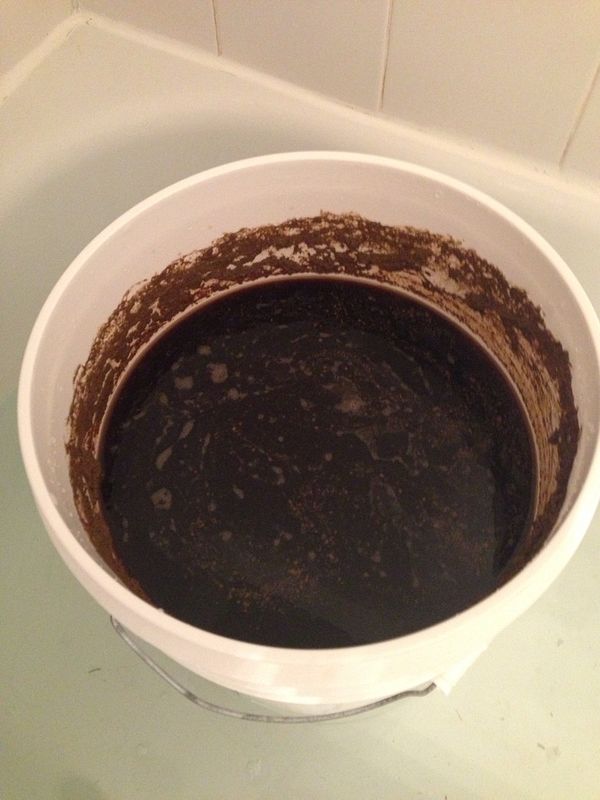Ok, so going with everyone's advice, I broke the seal on the fermentation bucket and took a sample to check the gravity. When I opened it, this is what I saw:
It smells WONDERFUL! Just like a hoppy Irish Stout should smell. I don't smell any off flavors and to me (in my EXTREMELY NOVICE EXPERIENCE) it doesn't look infected. There are obvious signs of kraussen rise (and subsequent fall), there is yeast flocculation going on (clumps floating on the surface) and no visible signs of infection. I tasted it and it's quite bitter, I'm assuming because fermentation isn't complete yet (details below). Now on to the gravity information...
My OG was 1.042, right on the bottom of the suggested OG range. Today, 19 days into fermentation, the gravity reads 1.030. Here's where I get concerned. It wasn't until this past weekend (16-17 days into fermentation) that I had vigorous airlock activity. I figured that up to this point I had a weak seal on the bucket and was just accepting that. However, with no change in temperature (maybe 1 degree) and no physical agitation over the weekend (I was out of town), fermentation kicked off and I was getting serious activity in the airlock.
To me (again, very inexperienced) it seems as though there was just a SERIOUS delay (long lag phase?) in fermentation but everything seems to be going ok now. My guess is that I'm on the tail end of the "exponential growth" phase and now heading into the "stationary phase" with the yeast. Strange as it is, I'm just going to keep it fermenting in the same place for another 1-2 weeks and see what happens.
If anyone has any insight into this strange occurrence, please chime in, I'm all ears!
**EDIT**
I forgot to add that since Sunday night (2 days ago) the airlock activity had slowed some before I check the gravity this morning. Since I've put the lid back on, I have positive pressure and continual airlock activity again.










![Craft A Brew - Safale BE-256 Yeast - Fermentis - Belgian Ale Dry Yeast - For Belgian & Strong Ales - Ingredients for Home Brewing - Beer Making Supplies - [3 Pack]](https://m.media-amazon.com/images/I/51bcKEwQmWL._SL500_.jpg)
















































